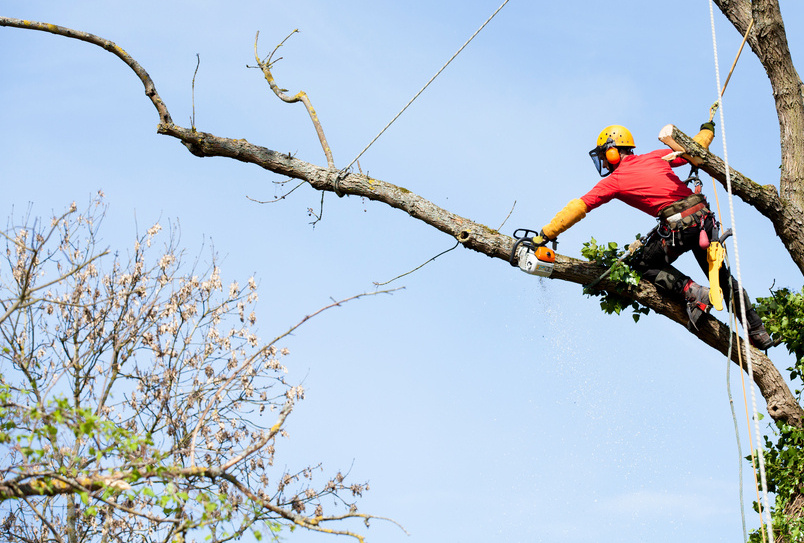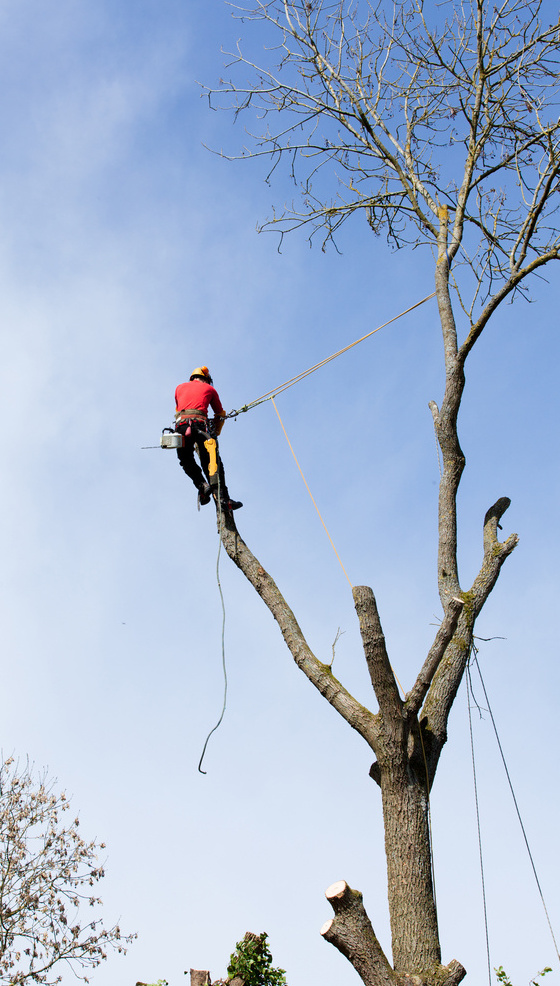My wife, Nancy, and I take a certain amount of pride in having done all of the work on our grounds by ourselves.
We planted and replanted all of the trees, shrubs and perennials that didn’t seed themselves or weren’t on the land when we got it. We did the fertilizing, pruning, raking, cutting back and watering. We even created the garden pond, patios, walkway and brick driveway.
But after 41 years here, I’m thinking of hiring an arborist. There is one huge oak where a couple of big branches didn’t resprout leaves after the winter moths chewed them off this spring. While painting the house trim this summer, I noticed some large branches hovering over the roof and wondered what might happen to them in a big storm.
About five years ago while I was cutting a branch off an oak tree, the branch fell more quickly than I had expected. It landed on the brick patio, leaving a divot 6 feet long and a foot wide. This upset Nancy, and she threatens me whenever I mention cutting off a few more branches.
I’ve read enough to know that I shouldn’t hire some random handyman with a ladder and a chain saw, but I wondered whether the small job I need warrants a certified arborist, one who would probably be part of a national chain.
Tom Ford, estimator and supervisor with the Portland office of Davey Tree, a national chain founded in 1893, said arborists are glad to do a consultation on any size job; Ford also is president of the Maine Arborist Association.
Arborists do anything related to trees, he said. That includes planting, removing, pruning, fertilizing, taking care of the soil around the trees and managing diseases and insect pests.
Anyone who takes your money to work on trees by law must be licensed by the state and have insurance, and there are hoops that the arborists must go through.
The International Association of Arboriculture has stricter standards than the state, Ford said. It certifies arborists in six different areas and requires that they have a certain amount of experience and pass tests in each area.
Ford said no specific course of study is required of arborists, although helpful training is offered at trade shows such as the one held each January by the Maine Arborist Association and at New England Grows, a yearly trade show in Boston.
“A lot of the training is hands-on,” Ford said, “but there is a lot of technical information where education is a big help, especially when it comes to insects, diseases, soil health, plant health and plant physiology.”
In addition, Ford said, a lot of training – not to mention physical strength and agility – is required to learn how to climb trees properly, run chain saws safely and do other aspects of the job.
While you need a license to do paid tree work for someone else, you do not need a license to work on your own trees. What should be the limits for do-it-yourself tree work?
“If you need to be more than 6 or 8 feet off the ground on a ladder doing pruning work, I would suggest calling a professional,” Ford answered.
I have a healthy fear of chain saws,and haven’t used them in a couple of decades. The idea of using a chain saw while on a ladder would scare me to death.
And cutting down big trees – especially anywhere near houses or power lines – seems dangerous for amateurs. You might have read about how to make trees fall where you want them to, but things could go wrong. Even if there is only a 1 percent chance of the tree going in the wrong direction and smashing the house, to me it is not worth the risk.
Hire someone. But who?
A few times over the years I have been approached by people who said they were doing tree work in the neighborhood and wondered if I wanted any trees removed. I asked Ford if reputable arborists would do that.
“Sometimes arborists do, at a certain time of year when there is a shortage of work, approach homeowners about work,” Ford replied. “But don’t hire anyone if they can’t show you a license and proof of insurance.”
The Maine Arborist Association has a list of its members and other information about arborists at mainearborist.org.
And don’t think it is too late in the year to get work done on your trees. In many ways, winter is the best time to have pruning done. The trees are dormant, so they won’t react badly to the cuts. And the ground is frozen, so the heavy equipment and falling trees and limbs won’t damage your lawn – or patio.
Tom Atwell has been writing the Maine Gardener column since 2004. He is a freelance writer gardening in Cape Elizabeth and can be contacted at 767-2297 or at tomatwell@me.com.
Send questions/comments to the editors.




Comments are no longer available on this story